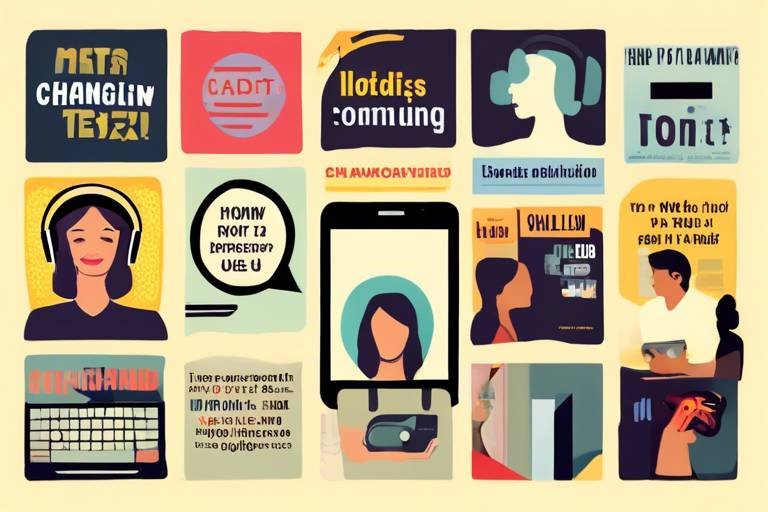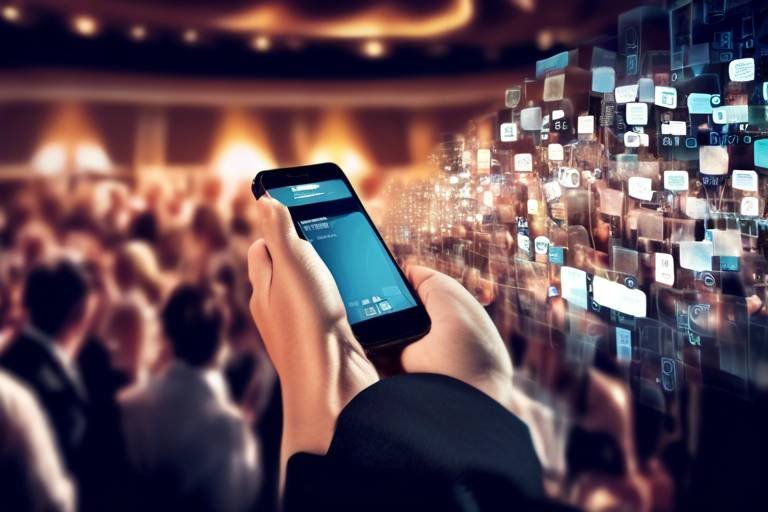The Impact of Technology on Senior Living
In today's fast-paced world, advancements in technology are reshaping the landscape of senior living in ways we could only dream of a few decades ago. Imagine a life where seniors can maintain their independence, enjoy enhanced safety, and experience a significant boost in their overall quality of life. This transformation is not just a fantasy; it's happening right now, thanks to innovative solutions tailored specifically for our elderly population. As we delve into the various aspects of how technology is impacting senior living, you'll discover that these advancements are not only practical but also life-changing.
At the heart of this technological revolution are smart home innovations, telehealth services, and assistive technologies that cater to the unique needs of seniors. These advancements help bridge the gap between traditional living environments and the dynamic world of technology, ensuring that seniors can thrive in their golden years. As we explore these categories, it becomes evident that technology is not merely a tool; it is a lifeline that connects seniors to the world around them, offering opportunities for engagement, health management, and social interaction.
Moreover, the integration of these technologies into senior living environments fosters a sense of community and belonging. It empowers seniors to take control of their lives, making choices that promote their well-being. The impact of technology on senior living is profound and multifaceted, providing not just solutions to everyday challenges but also enriching the lives of seniors in ways that enhance their dignity and self-worth.
In the following sections, we will explore specific technologies that are making waves in the senior living space, from smart home innovations that turn a house into a responsive living space to telehealth services that revolutionize access to healthcare. We'll also look at assistive technologies that empower seniors to communicate and navigate their environments with ease. So, let's embark on this journey to discover how technology is truly transforming the lives of seniors.
- How does technology improve safety for seniors?
Technology enhances safety through features like fall detection systems, smart home monitoring, and emergency alert systems, which allow seniors to live independently while ensuring help is always available.
- What are some examples of telehealth services available for seniors?
Telehealth services include virtual doctor visits, remote health monitoring, and online therapy sessions, making healthcare more accessible and convenient for seniors.
- Can assistive technologies help seniors with mobility issues?
Absolutely! Assistive technologies like smart walkers, scooters, and stairlifts are designed to help seniors move around safely and confidently, promoting greater independence.
- How can technology help combat loneliness among seniors?
Through video calls, social media platforms, and virtual community events, technology allows seniors to stay connected with family and friends, reducing feelings of isolation.

Smart Home Innovations
Smart home technologies are revolutionizing senior living by providing automated systems that enhance safety and convenience. Imagine a world where your home does the heavy lifting, allowing you to maintain your independence while ensuring your well-being. These innovations are not just about luxury; they are about creating a supportive environment that caters to the unique needs of seniors. For instance, smart lighting systems can automatically adjust based on the time of day or even the presence of a person in the room, reducing the risk of falls in dimly lit areas. This is just one example of how technology can transform a simple living space into a haven of safety.
Another fantastic feature of smart homes is the integration of voice-activated assistants. These devices can control everything from the thermostat to the television, allowing seniors to manage their environment without needing to get up. Imagine asking your assistant to turn on your favorite show or to dim the lights for a cozy evening. This level of convenience not only enhances comfort but also fosters a sense of autonomy, which is crucial for mental health and overall happiness.
Moreover, smart home innovations extend to security systems that provide peace of mind. With smart cameras and doorbell systems, seniors can monitor who is at their door without having to physically answer it. This added layer of security is invaluable, especially for those living alone. Families can also stay connected through these systems, receiving alerts and updates to ensure their loved ones are safe and secure.
To sum it up, smart home innovations are not just gadgets; they are essential tools that empower seniors to live independently while ensuring their safety and comfort. The integration of these technologies is paving the way for a future where seniors can thrive in their own homes. As we continue to embrace these advancements, it is important to consider how they can be tailored to meet the specific needs of the elderly population, creating a more inclusive and supportive living environment.
As we look to the future, the possibilities of smart home technology are endless. From automated emergency response systems to health monitoring features, the landscape of senior living is changing for the better. The question now is: how can we make these technologies accessible to everyone? The answer lies in education and awareness, ensuring that seniors and their families understand the benefits and functionalities of these innovations.

Telehealth Services
In today’s fast-paced world, have emerged as a game-changer, particularly for seniors who may struggle with mobility or face challenges in accessing traditional healthcare facilities. Imagine being able to consult with your doctor without ever having to leave the comfort of your living room—sounds fantastic, right? This is precisely what telehealth offers, bridging the gap between healthcare providers and patients through technology. By leveraging video calls, online consultations, and health monitoring apps, seniors can receive medical advice and support from the safety of their homes.
One of the most significant advantages of telehealth is its ability to enhance access to healthcare. For many seniors, traveling to a doctor’s office can be daunting due to physical limitations or transportation issues. With telehealth, those hurdles are eliminated. Seniors can schedule appointments at their convenience, reducing the stress associated with waiting rooms and long commutes. This not only saves time but also allows for more frequent check-ins with healthcare providers, leading to better management of chronic conditions.
Moreover, telehealth services often include a range of features that promote proactive healthcare management. For instance, many telehealth platforms provide remote monitoring tools that allow healthcare providers to track a patient’s vital signs and health metrics in real-time. This data can be invaluable for detecting potential health issues early on. Imagine a scenario where your blood pressure is monitored remotely, and any irregularities are flagged immediately, prompting timely medical intervention. Such capabilities can significantly improve health outcomes and provide peace of mind for both seniors and their families.
These remote monitoring devices come in various forms, from simple wearable fitness trackers to sophisticated sensors placed around the home. They continuously collect data about a senior's health and can alert caregivers or family members if something seems off. This proactive approach to healthcare is akin to having a personal health assistant available 24/7, ensuring that seniors receive the attention they need without the constant need for in-person visits.
Another critical component of telehealth services is fall detection technology. Falls are a leading cause of injury among seniors, and having a system that can detect a fall in real-time can be lifesaving. These systems use sensors and alarms to notify caregivers immediately if a senior falls, ensuring they receive help right away. Think of it as having a safety net that catches you before you hit the ground. This technology not only enhances safety but also provides seniors with the confidence to move about their homes freely.
Telehealth also shines in the realm of medication management. Many seniors struggle with managing their medications, leading to missed doses or incorrect usage. Automated medication dispensers, often integrated into telehealth platforms, can remind seniors when it’s time to take their medications and dispense the correct dosages. This technology acts as a reliable partner in health, helping to ensure that seniors adhere to their treatment plans and ultimately improve their health outcomes.
In summary, telehealth services are not just a convenience; they represent a significant leap forward in how seniors can manage their health. By combining technology with healthcare, we’re not only enhancing access but also empowering seniors to take control of their health and well-being. As we continue to embrace these innovations, the future looks bright for senior living, making it easier for them to lead independent, fulfilling lives.
- What is telehealth? Telehealth refers to the use of technology to provide healthcare services remotely, allowing patients to consult with healthcare providers via video calls, phone calls, or online platforms.
- How does telehealth benefit seniors? Telehealth offers seniors improved access to healthcare, convenience, and the ability to manage their health from home, reducing the need for travel and in-person visits.
- What types of services are available through telehealth? Services include virtual consultations, remote monitoring, medication management, and health education, among others.
- Is telehealth secure? Most telehealth platforms use encryption and secure connections to protect patient information and maintain confidentiality.

Remote Monitoring Devices
In today's fast-paced world, have become a game-changer for seniors and their families. Imagine having a personal health assistant that never sleeps, constantly keeping an eye on your well-being, and alerting your loved ones at the first sign of trouble. That's exactly what these innovative devices do! From wearable technology like smartwatches to home-installed sensors, remote monitoring systems are designed to ensure that seniors can live independently while staying connected to their healthcare providers and family members.
One of the most significant advantages of remote monitoring devices is their ability to provide real-time data about a senior's health. For instance, wearable devices can track vital signs such as heart rate, blood pressure, and even sleep patterns. This information is invaluable for caregivers and healthcare professionals, allowing them to make informed decisions quickly. Imagine a scenario where a senior experiences an irregular heartbeat; the device can send an alert to a family member or a healthcare provider, prompting immediate action before the situation escalates.
Moreover, these devices can be equipped with features that monitor daily activities, providing insights into the senior’s routine. If a device detects a significant change in activity levels, such as a drop in physical movement or a sudden increase in sleep, it can trigger alerts, prompting caregivers to check in on their loved ones. This proactive approach to health management is not just about responding to emergencies; it’s about preventative care that can lead to better health outcomes in the long run.
Consider the following table that highlights some popular remote monitoring devices and their key features:
| Device | Key Features | Benefits |
|---|---|---|
| Smartwatch | Heart rate monitoring, fall detection, GPS tracking | Immediate alerts, location tracking, health insights |
| Wearable Fitness Tracker | Step counting, sleep tracking, activity reminders | Encourages physical activity, monitors health trends |
| Home Sensors | Motion detection, temperature monitoring, emergency alerts | Enhanced safety, alerts for unusual activity |
In addition to their health-monitoring capabilities, remote monitoring devices can also play a crucial role in enhancing emotional well-being. Many devices come equipped with features that allow seniors to communicate easily with family members or caregivers. For instance, some wearable devices have a built-in messaging system that lets seniors send quick updates or alerts to their loved ones with just a tap. This connectivity reduces feelings of isolation and keeps the lines of communication open, which is essential for mental health.
In conclusion, remote monitoring devices are not just about technology; they represent a shift towards a more holistic approach to senior care. By combining health monitoring with communication capabilities, these devices empower seniors to live independently while ensuring that help is always just a click or a call away. As we continue to embrace technological advancements, it's clear that these devices will play a pivotal role in enhancing the quality of life for seniors and their families.
- What types of remote monitoring devices are available for seniors? There are various types of devices, including smartwatches, wearable fitness trackers, and home sensors that monitor health and safety.
- How do these devices help in emergency situations? Many devices can detect falls or irregular health patterns and send alerts to caregivers or family members for immediate assistance.
- Can remote monitoring devices track daily activities? Yes, many devices monitor daily activities, providing insights into a senior's routine and alerting caregivers to any significant changes.

Fall Detection Technology
Imagine a world where a simple device can act as a guardian angel for seniors, providing peace of mind not just for them, but for their families as well. has emerged as a groundbreaking innovation in senior living, revolutionizing how we approach safety and emergency response. These systems utilize advanced sensors and algorithms to monitor the movements of seniors in real-time, ensuring that help is just a heartbeat away.
When it comes to falls, every second counts. According to the Centers for Disease Control and Prevention (CDC), falls are the leading cause of injury among seniors, often resulting in serious consequences. With fall detection technology, the risk of serious injuries can be significantly mitigated. These systems can detect when a fall occurs and automatically alert caregivers or emergency services, providing immediate assistance. This rapid response can be the difference between a minor incident and a life-altering event.
But how does this technology actually work? Most fall detection systems are equipped with a combination of motion sensors, gyroscopes, and accelerometers that analyze the user's movements. When a senior falls, the system recognizes the sudden change in motion and triggers an alert. Some devices even come with a wearable component, like a pendant or wristband, that allows seniors to manually call for help if they feel unsafe or have had a fall but are unable to get up.
To give you a clearer picture, here’s a quick breakdown of the key features of fall detection technology:
| Feature | Description |
|---|---|
| Real-Time Alerts | Immediate notifications sent to caregivers or emergency services when a fall is detected. |
| Wearable Devices | Lightweight pendants or wristbands that seniors can wear for easy access to help. |
| Automatic Monitoring | Continuous tracking of movement patterns to detect irregularities that may indicate a fall. |
| Emergency Response | Direct connection to emergency services for prompt assistance. |
Furthermore, many systems are designed with user-friendliness in mind, ensuring that seniors can easily understand and operate them. This is crucial because technology should empower, not intimidate. As a result, these devices often come with straightforward instructions and minimal buttons, making them accessible for everyone, regardless of their tech-savviness.
As we continue to embrace these innovations, it's essential to recognize that fall detection technology not only enhances safety but also encourages seniors to live more independently. Knowing that help is readily available allows many seniors to engage in activities they might have otherwise avoided due to fear of falling. In essence, it’s about giving them the freedom to enjoy life while ensuring their safety.
- What are the benefits of fall detection technology? Fall detection technology provides immediate alerts to caregivers, ensuring prompt assistance, which can prevent serious injuries.
- How does fall detection work? It uses sensors to monitor movement and can automatically detect falls, sending alerts to designated contacts.
- Are these devices easy for seniors to use? Yes, most fall detection devices are designed with simplicity in mind, making them user-friendly for seniors.
- Can fall detection systems be integrated with other smart home technologies? Absolutely! Many fall detection systems can work alongside other smart home devices for enhanced safety and convenience.
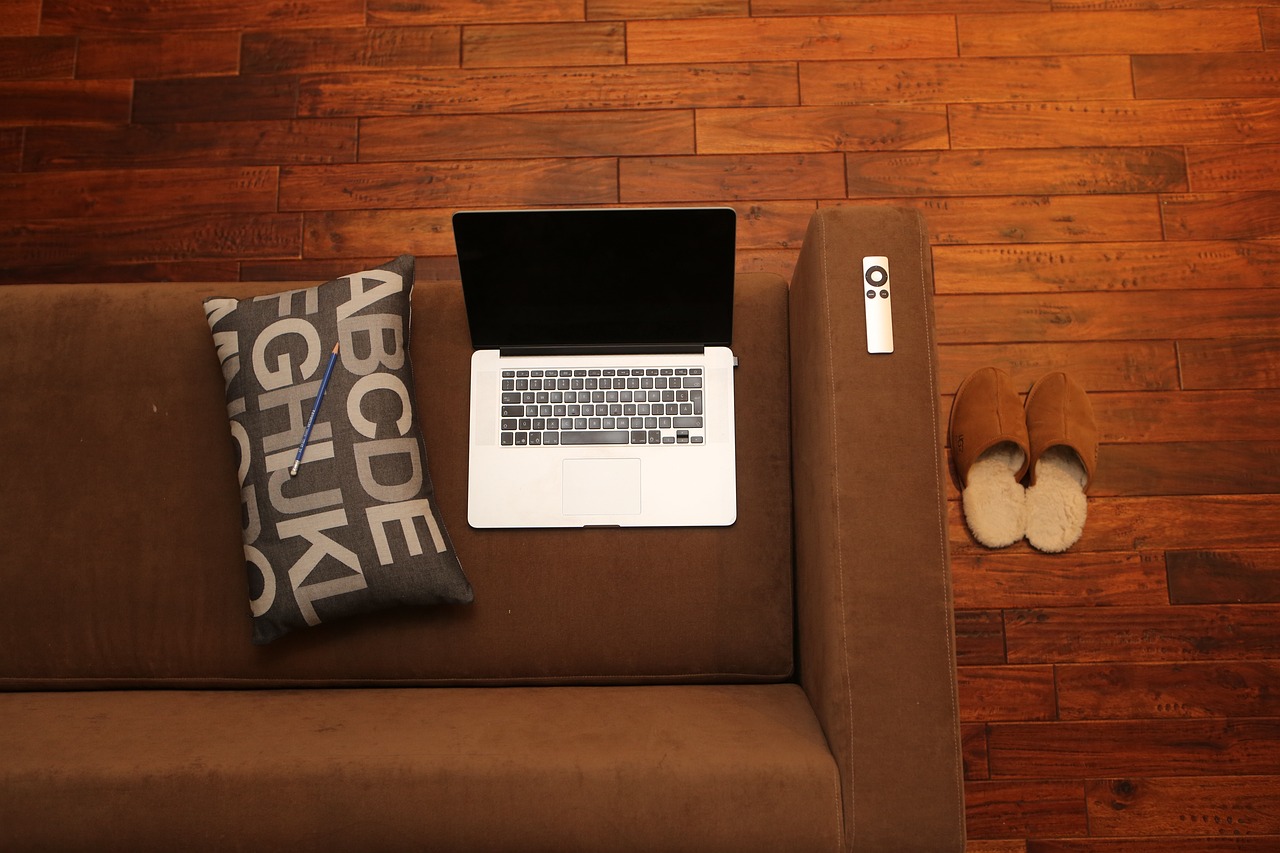
Medication Management Solutions
In the fast-paced world we live in, keeping track of medications can be a daunting task, especially for seniors who may be juggling multiple prescriptions. This is where come into play, acting as a lifeline for many. Imagine a world where forgetting to take your meds is a thing of the past—sounds appealing, right? With the advent of technology, seniors can now utilize automated medication dispensers and reminder systems that not only simplify the process but also enhance health outcomes significantly.
Automated dispensers are designed to sort and dispense medications at the correct times, ensuring that seniors receive the right dosage without confusion. These devices often come equipped with alarms or notifications, alerting users when it’s time to take their medication. This is particularly beneficial for those who may have cognitive impairments or simply have a busy lifestyle. The peace of mind that comes from knowing you have a reliable system in place can be invaluable.
Moreover, these solutions can be integrated with smart home technology, allowing family members or caregivers to monitor medication adherence remotely. This integration creates a safety net, ensuring that loved ones are taking their medications as prescribed. Imagine being able to receive a notification on your phone if a family member forgets to take their medication—this feature can be a game-changer in promoting proactive health management.
In addition to automated dispensers, there are also mobile apps that help seniors manage their medications effectively. These apps can provide reminders, track dosages, and even offer refill notifications. With user-friendly interfaces designed specifically for seniors, these applications make it easier than ever to stay on top of health needs. The convenience of having all this information at your fingertips cannot be overstated.
To illustrate the impact of medication management solutions, consider the following table that highlights the key benefits:
| Benefit | Description |
|---|---|
| Improved Adherence | Automated reminders and dispensers help ensure that seniors take their medications on time. |
| Reduced Risk of Errors | Automation minimizes the chances of taking the wrong dosage or missing a dose altogether. |
| Greater Independence | With reliable systems in place, seniors can manage their medication without constant supervision. |
| Enhanced Communication | Family members can receive updates on medication adherence, fostering better communication. |
In summary, medication management solutions are not just about convenience; they are about empowering seniors to take control of their health. By leveraging technology, we can create an environment where seniors feel confident and secure in managing their medications. Whether it’s through automated dispensers, mobile applications, or family engagement, the goal remains the same: to enhance the quality of life for our senior citizens.
Q: What are automated medication dispensers?
A: Automated medication dispensers are devices that sort and dispense medications at scheduled times, helping seniors take the correct dosage without confusion.
Q: How do mobile apps assist in medication management?
A: Mobile apps provide reminders, track dosages, and offer refill notifications, making it easier for seniors to manage their medications effectively.
Q: Can family members monitor medication adherence?
A: Yes, many automated systems allow family members or caregivers to receive notifications about medication adherence, providing peace of mind.

Virtual Social Engagement
In today's fast-paced world, where technology evolves at lightning speed, the importance of for seniors cannot be overstated. Imagine a world where a grandparent can see and talk to their grandchildren without the need for a long drive or a plane ticket. This is not just a dream—it's a reality thanks to advancements in technology! Virtual platforms have become a lifeline for many seniors, offering them the chance to connect with family and friends from the comfort of their homes. The ability to engage with loved ones through video calls, social media, and even online games helps combat the feelings of loneliness that can often accompany aging.
Moreover, the benefits of virtual social engagement extend beyond just communication. It encourages seniors to remain active participants in their families' lives, fostering a sense of belonging and purpose. For instance, many seniors are now using video conferencing tools like Zoom or Skype to attend family gatherings virtually, share stories, and even celebrate special occasions. This not only keeps them connected but also enhances their emotional well-being, making them feel valued and included.
To further illustrate the impact of technology on social engagement, consider the following table that highlights some popular platforms and their features:
| Platform | Features | Benefits for Seniors |
|---|---|---|
| Zoom | Video conferencing, screen sharing, virtual backgrounds | Easy to use, allows for large family gatherings, promotes face-to-face interaction |
| Social networking, photo sharing, groups | Stay updated with family and friends, share experiences, join communities | |
| Text messaging, voice and video calls, group chats | Instant communication, simple interface, keeps conversations going |
Furthermore, engaging in online activities such as virtual book clubs or hobby groups can provide seniors with opportunities to meet new people and explore shared interests. This not only enriches their social lives but also keeps their minds active and engaged. The beauty of technology is that it offers various options tailored to seniors' needs, making it easier for them to stay connected.
However, it's essential to consider that not all seniors are tech-savvy. This is where family members can step in to help. Teaching seniors how to use these platforms can be a bonding experience in itself. With a little patience and encouragement, they can become proficient in navigating these digital landscapes, thus unlocking a whole new world of social interaction.
In conclusion, virtual social engagement is a game-changer for seniors, enhancing their quality of life and providing them with the emotional support they need. As technology continues to advance, the possibilities for connection will only grow, ensuring that seniors can maintain their relationships and continue to thrive in an increasingly digital world.
- How can I help my senior loved one get started with video calls? Start by choosing a user-friendly platform and guide them through the setup process. A little practice goes a long way!
- What if my loved one struggles with technology? Be patient and provide ongoing support. You can also look for community resources that offer tech training for seniors.
- Are there any online activities specifically designed for seniors? Yes! Many websites offer virtual classes, book clubs, and hobby groups tailored for seniors.
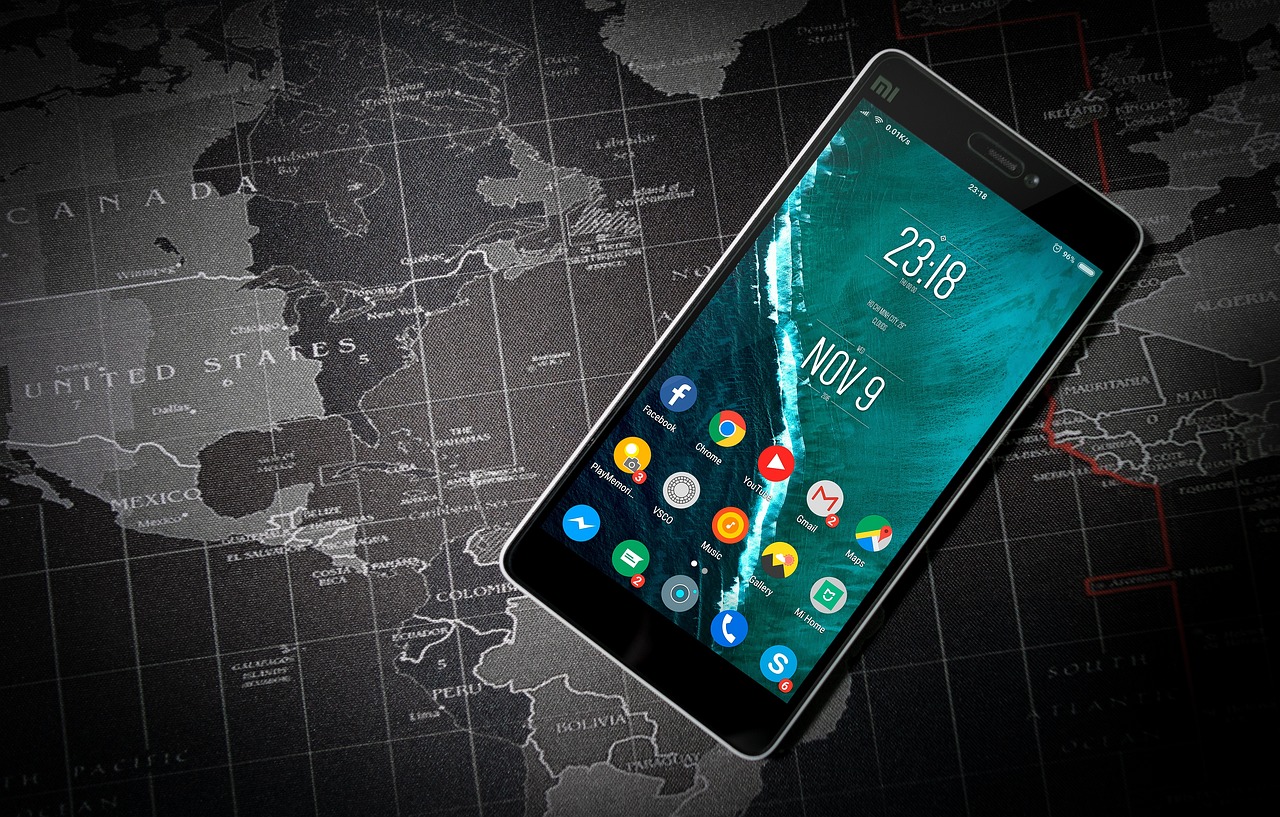
Assistive Technologies
In today's fast-paced world, the role of in enhancing the lives of seniors cannot be overstated. These innovative tools are designed to empower older adults, enabling them to navigate their environments with greater ease and communicate more effectively with their loved ones. Imagine a world where seniors can maintain their independence, engage in social activities, and manage their daily tasks without feeling overwhelmed or isolated. This is the reality that assistive technologies are creating.
At the heart of assistive technologies are devices that cater to various needs, from mobility aids to communication tools. For instance, mobility aids such as smart walkers and electric scooters are transforming how seniors move around their communities. No longer confined to their homes, seniors can explore parks, visit friends, and engage in community events, all while feeling secure and supported. These devices not only enhance mobility but also promote a sense of freedom and adventure, allowing seniors to embrace life fully.
Communication is another critical area where assistive technologies shine. Many seniors find it challenging to stay connected with family and friends due to physical limitations or technological barriers. Fortunately, the advent of simplified smartphones and tablets has bridged this gap. These devices are designed with user-friendly interfaces and larger buttons, making it easier for seniors to send messages, make calls, and even engage in video chats. This newfound ability to communicate fosters a sense of belonging and reduces feelings of loneliness, which is essential for emotional well-being.
Moreover, the integration of assistive technologies into senior living environments is not just about the devices themselves but also about the support systems surrounding them. Many communities are now offering training programs to help seniors become familiar with these technologies. This training empowers them to use their devices confidently, ensuring they can take full advantage of the benefits. Imagine a senior confidently using a tablet to video call their grandchild, sharing stories and laughter, all thanks to the right tools and support.
As we look towards the future, the potential for assistive technologies to enhance senior living continues to expand. Innovations in areas such as artificial intelligence and smart home integration promise to create even more tailored solutions for seniors. For example, imagine a smart home that can adjust lighting and temperature based on the senior's preferences or a voice-activated assistant that can remind them to take their medication. The possibilities are endless, and the impact on the quality of life for seniors is profound.
- What are assistive technologies? Assistive technologies are devices or systems that help individuals with disabilities or age-related challenges perform tasks that might otherwise be difficult or impossible.
- How can assistive technologies improve the quality of life for seniors? These technologies promote independence, enhance communication, and provide mobility solutions, leading to greater engagement in social and community activities.
- Are assistive technologies easy to use? Many assistive technologies are designed with seniors in mind, featuring user-friendly interfaces and simplified controls to ensure ease of use.
- Can assistive technologies be integrated into smart homes? Yes, many assistive technologies can work alongside smart home systems to create a more supportive living environment for seniors.
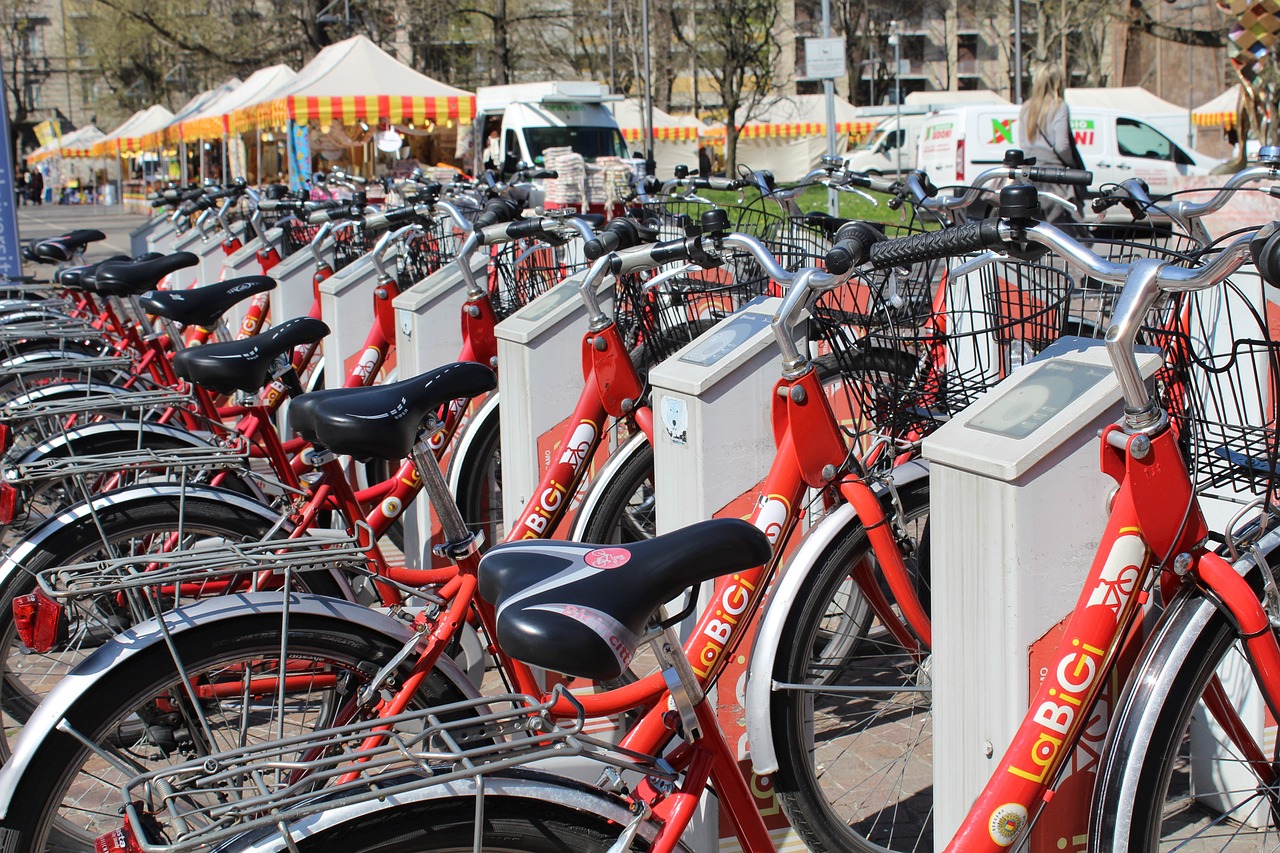
Mobility Aids
As we age, maintaining our mobility becomes increasingly important for our independence and quality of life. have emerged as essential tools that empower seniors to navigate their surroundings with confidence and ease. Imagine a world where every step is supported by technology designed specifically for you; that's the promise of modern mobility aids. From smart walkers to advanced scooters, these devices are not just about getting from point A to point B; they are about enhancing a senior's ability to engage with life.
One of the most exciting developments in this field is the introduction of smart walkers. Unlike traditional walkers, which can sometimes feel cumbersome, smart walkers are equipped with sensors and connectivity features that make them incredibly user-friendly. They can detect obstacles, provide navigation assistance, and even alert caregivers if the user is in distress. This innovation not only promotes safety but also encourages seniors to venture out more often, whether it’s for a stroll in the park or a visit to the local grocery store.
Another remarkable option is the use of mobility scooters. These electric devices are perfect for seniors who may have difficulty walking long distances. With comfortable seating and easy controls, scooters allow seniors to maintain their independence while exploring their neighborhoods or participating in community events. Imagine being able to zoom around the local farmer's market or enjoy a day at the beach without the worry of fatigue or strain!
Moreover, come in various forms, each tailored to meet the unique needs of seniors. Here’s a brief overview of some popular options:
| Type of Mobility Aid | Description | Benefits |
|---|---|---|
| Smart Walkers | Walkers equipped with sensors for safety and navigation. | Increased safety, independence, and confidence. |
| Mobility Scooters | Electric scooters designed for easy maneuverability. | Enhanced mobility, comfort, and reduced fatigue. |
| Canes with Smart Features | Canes that include GPS tracking and emergency alerts. | Improved safety and peace of mind for users and families. |
In addition to these advancements, many mobility aids are designed with user-friendliness in mind. Features such as adjustable height, lightweight materials, and ergonomic designs ensure that seniors can easily handle their aids without feeling overwhelmed. It's all about making life easier and more enjoyable!
But let’s not forget the emotional aspect of mobility aids. They can significantly enhance a senior's quality of life by fostering social interactions and encouraging participation in community activities. When seniors can move freely and confidently, they are more likely to engage with friends and family, attend events, and explore new interests. This not only combats feelings of isolation but also enriches their lives in countless ways.
In conclusion, mobility aids are not just tools; they are gateways to independence and active living for seniors. With the right mobility aid, every senior can reclaim their freedom and enjoy a vibrant lifestyle. So, whether it’s a smart walker or a mobility scooter, embracing these technologies can lead to a more fulfilling life.
- What are mobility aids? Mobility aids are devices designed to assist individuals with movement challenges, helping them navigate their environment more easily.
- How do I choose the right mobility aid? Consider factors such as your mobility level, the type of terrain you will navigate, and any specific needs you may have.
- Are mobility aids covered by insurance? Many insurance plans cover mobility aids, but it’s best to check with your provider for specific details.
- Can mobility aids improve my quality of life? Absolutely! Mobility aids can enhance independence, promote social interaction, and reduce the risk of falls.
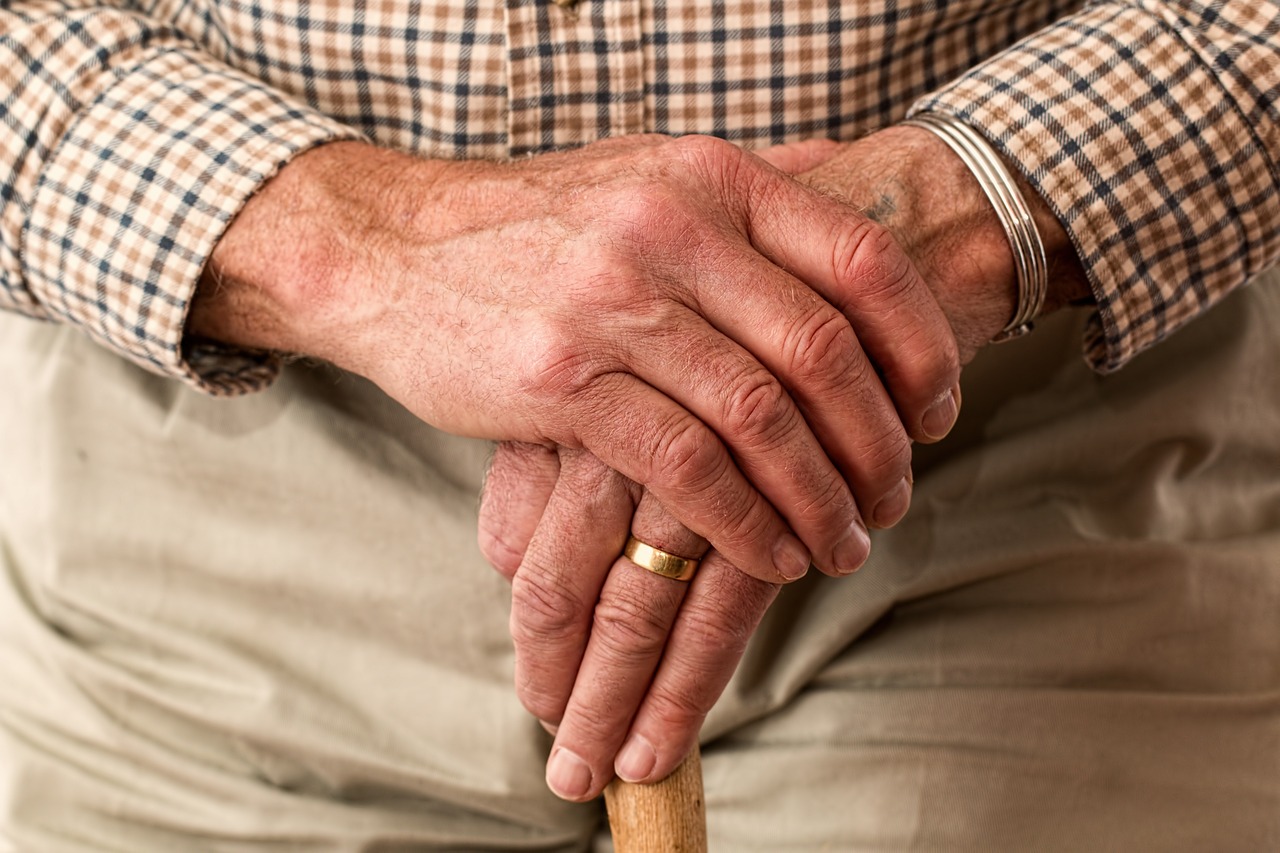
Communication Tools
In today's fast-paced world, staying connected is more important than ever, especially for seniors who may feel isolated due to mobility issues or geographical distance from loved ones. designed specifically for seniors are bridging that gap, offering intuitive and user-friendly solutions that cater to their unique needs. Imagine a world where your grandmother can easily video chat with you from her living room or where your grandfather can send a text message without fumbling through complicated settings. This is the reality that modern technology has created, and it’s nothing short of amazing!
One of the most significant advancements in this area is the development of simplified smartphones and tablets. These devices come pre-loaded with easy-to-use applications that allow seniors to connect with family and friends effortlessly. With larger icons, voice commands, and touchscreens that respond to the lightest tap, these gadgets help eliminate the frustration often associated with traditional tech. Imagine your loved one being able to share photos of their garden or their latest culinary creation with just a few taps. It's like having a window to their world, no matter where you are!
Moreover, video calling applications have become a lifeline for many seniors. Platforms like Zoom, Skype, and FaceTime enable real-time visual communication, which is crucial for maintaining emotional connections. For seniors, seeing a familiar face can uplift their spirits and combat feelings of loneliness. It's not just a call; it's a virtual visit that can bring joy and warmth into their lives. In fact, studies have shown that regular video calls can significantly improve the mental well-being of older adults, making them feel more engaged and less isolated.
Another innovative communication tool is the use of smart home assistants, such as Amazon’s Alexa or Google Home. These devices can facilitate hands-free communication, allowing seniors to make calls or send messages simply by using their voice. Imagine your mother saying, "Alexa, call Susan," and within seconds, she's chatting away with her best friend! This not only promotes independence but also provides a sense of security, knowing that help is just a voice command away.
To ensure that seniors can make the most of these technologies, many organizations and family members are offering training sessions. These sessions can range from simple tutorials on how to use a device to comprehensive courses on navigating social media. The goal is to empower seniors to embrace technology confidently, making them feel like part of the digital age. After all, when seniors feel equipped to communicate, they can enjoy richer relationships and a more fulfilling life.
In summary, communication tools designed for seniors are transforming the way they connect with the world. By embracing these technologies, we are not just enhancing their ability to communicate; we are enriching their lives, fostering connections, and ultimately promoting their well-being. As we continue to innovate, it’s essential to keep the needs of our senior population in mind, ensuring that technology serves as a bridge rather than a barrier.
- What are some popular communication tools for seniors?
Some popular tools include simplified smartphones, tablets, video calling apps like Zoom and FaceTime, and smart home assistants like Amazon Alexa.
- How can I help my senior loved one learn to use these tools?
Consider offering one-on-one tutorials, enrolling them in community classes, or providing easy-to-follow guides that cater to their learning pace.
- Are there any safety concerns with using communication tools?
Yes, it’s important to educate seniors on privacy settings and potential scams. Encourage them to share only with trusted contacts and be cautious of unsolicited messages.
Frequently Asked Questions
- How can smart home technologies improve the safety of seniors?
Smart home technologies, like automated lighting and security systems, can significantly enhance the safety of seniors. For instance, motion sensors can alert caregivers if a senior has fallen or if there’s unusual activity in the home. This allows for quicker responses to emergencies, ensuring that help is always just a button press away.
- What are the benefits of telehealth services for seniors?
Telehealth services provide seniors with the ability to consult healthcare professionals from the comfort of their homes. This is especially beneficial for those with mobility issues or those living in remote areas. It reduces the need for travel, saves time, and allows for more frequent check-ins, which can lead to better health outcomes.
- How do remote monitoring devices work?
Remote monitoring devices, such as wearables and home sensors, track health metrics like heart rate, activity levels, and even sleep patterns. They send this data to healthcare providers or family members, allowing for proactive health management. If any anomalies are detected, alerts can be sent out immediately, ensuring timely intervention.
- What is fall detection technology, and how does it help seniors?
Fall detection technology uses sensors to monitor a senior's movements and can automatically detect when a fall occurs. When a fall is detected, it alerts emergency services or caregivers, ensuring that help arrives quickly. This technology can be a lifesaver, as it significantly reduces the time a senior might be left unattended after a fall.
- How can medication management solutions assist seniors?
Medication management solutions, like automated dispensers and reminder systems, help seniors keep track of their medications. They can alert users when it’s time to take a dose and dispense the correct amount, reducing the risk of missed doses or medication errors. This promotes adherence to prescribed treatments and contributes to better health.
- In what ways does technology facilitate virtual social engagement for seniors?
Technology allows seniors to stay connected with family and friends through video calls, social media, and messaging apps. This virtual engagement combats feelings of loneliness and isolation, which are common among seniors. By bridging the gap between generations, technology fosters stronger emotional connections and enhances overall well-being.
- What types of assistive technologies are available for seniors?
Assistive technologies for seniors include a wide range of devices such as mobility aids like smart walkers and scooters, as well as communication tools like simplified smartphones and tablets. These technologies empower seniors to navigate their environments more easily and communicate effectively, promoting independence and confidence.
- How do mobility aids enhance the independence of seniors?
Mobility aids, such as smart walkers and scooters, provide seniors with the means to move around more freely and safely. This increased mobility allows them to participate in community activities, run errands, and engage in social events, ultimately leading to a more active and fulfilling lifestyle.
- What are the advantages of communication tools designed for seniors?
Communication tools tailored for seniors, like user-friendly smartphones and tablets, simplify the process of staying in touch with loved ones. These devices often feature larger buttons, simplified interfaces, and voice-activated commands, making it easier for seniors to connect and share their lives with family and friends.

















